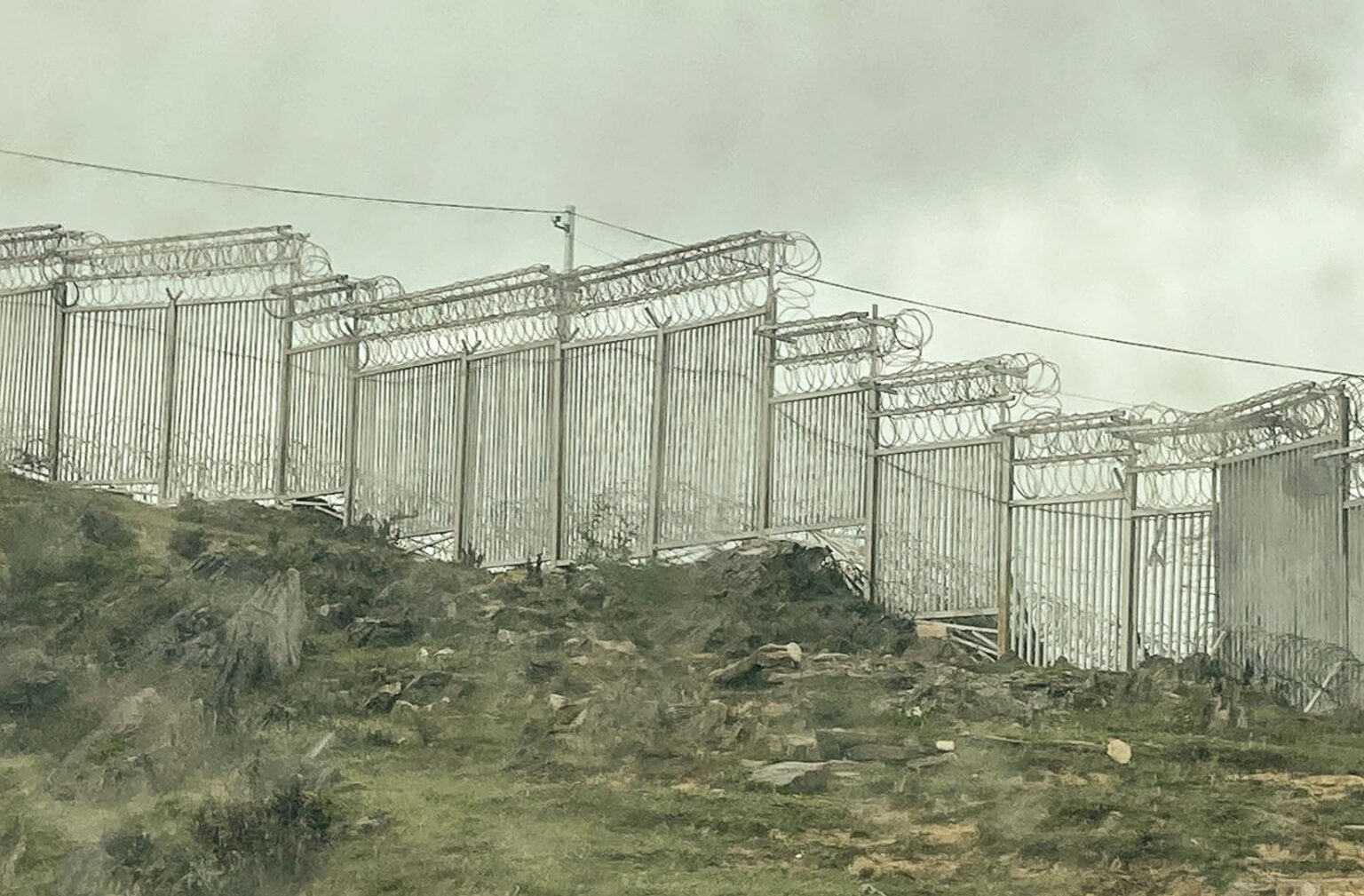Global Courant 2023-05-24 06:15:40
Hanoi, Vietnam – When she arrived at her destination in Myanmar’s northern Shan State, expecting to get a new job, Diep*, a 19-year-old Vietnamese woman, realized she had been trafficked.
Left alone in a locked room, she could hear but not see other people. Armed men guarded the house.
Diep was just looking for a way to make ends meet.
She grew up in a poor family with five siblings. Her parents could not afford their education, so she left school at the age of 14 to work in a factory. After three years there, she moved on to jobs in clothing stores and restaurants in Ho Chi Minh City. But wages were low and her financial situation barely improved.
In 2019, a man who was a friend of a friend contacted her on Facebook and offered her a job in Myanmar.
After several meetings with him to discuss the offer – a well-paid job as a waitress – she finally decided to accept the role and flew to Myanmar with him.
“The opportunity was so exciting. I could save money and… help my parents and buy them new clothes,’ Diep said.
After arriving at the airport, Diep was transported across the country in several cars for 24 hours, until they reached Shan State.
Locked in her room, Diep was told her job was to become a sex worker. Furious, she refused.
Her captors, determined to subdue her, gave her a beating, but despite the pain, she continued to resist and insisted that she not be forced into prostitution.
Only after the men guarding the house visited her room and raped her did Diep relent. She was told that if she did not consent to sex work, her daily punishment would be rape.
Some trafficked women walked for days on foot to escape (Courtesy of Blue Dragon Children’s Foundation)
While Diep was now allowed to associate with other women – some of whom were also Vietnamese – elsewhere in the house, they were all forced to use crystal meth. Their captors claimed the drug increased women’s stamina and libido.
She wanted to escape, but soon realized how dangerous that could be – and that it could kill her.
“I can’t believe I was in that situation,” Diep said. “Even in my worst nightmares, I never imagined my life would turn out like this.”
But one day, another woman Diep befriended managed to escape with the help of the Blue Dragon Children’s Foundation, a Hanoi-based NGO that rescues victims of human trafficking.
In the end, it was also Blue Dragon who devised a plan to save Diep, who had been allowed to use a telephone.
By the time she returned to Vietnam, Diep was 22 and had been in sexual slavery for over three years.
“Realizing that I was free, that I was home, that I would be able to see my parents again, that the pain was over… It was such a shock. I couldn’t believe it,’ Diep said.
“Sometimes I hope my time there was just a bad dream,” she added. “But sometimes when I’m at home I think this is a dream… and then I get scared that it’s not true, that I’m just dreaming, and that I’m still stuck there.”
Blue Dragon says it cannot share precise details about such rescues as doing so could jeopardize future efforts to return these women to Vietnam. However, Diep’s story is not unique. Blue Dragon recently reported a surge in the number of Vietnamese women being smuggled into Myanmar.
Trafficking patterns are changing in part due to a massive fence China has built along the country’s southern borders with Vietnam, Laos and Myanmar. The three-metre-tall (10-foot) fence, which is electrified, covered in barbed wire, equipped with motion sensors and spans at least 1,000 kilometers (621 mi), has had a significant effect on informal migration.
“The border fence makes crossing between countries much more difficult for traffickers,” Blue Dragon founder Michael Brosowski told Al Jazeera. “Previously, they carried their victims unnoticed over mountain trails and rivers to China. Now that this is not possible, the traffickers have opened up new destinations to take their victims. We have seen an increase in trade to northern Myanmar, Cambodia and, to some extent, Laos.
While the smuggling of Vietnamese women into China for forced marriage or sexual exploitation has continued at a much lower level, there has been a marked increase in the number of persons trafficked for labor exploitation in Cambodia, which is grappling with a gang-led cybercrime crisis, and to Myanmar, where people – especially women – are forced into sex trafficking.
The fence also means that Vietnamese living in remote, mountainous areas near the Chinese border, who once depended on informal migration and employment in China for their income, have been cut off from their usual job opportunities. Desperate for money, they have become increasingly susceptible to traffickers’ talk of high-paying jobs abroad.
In 2020, Blue Dragon rescued 274 Vietnamese human trafficking victims from China, while that number fell to 110 in 2022. From Cambodia and Myanmar, they rescued 62 and 44 people from each country in 2022, respectively – in 2018 the figure was zero in those two countries.
Despite the growth, it has been there little coverage of Vietnamese trafficked to Myanmar in Vietnamese state media, with most reports focusing on Vietnamese forced into slavery in Cambodia, as well as warnings from Vietnam’s Ministry of Public Security against “easy money” job promises in Cambodia.
Like Diep, Hanh*, another sex trafficking victim in Myanmar, said she was forced into prostitution, treated violently and forced to use crystal meth. She faced a constant threat of violence and witnessed multiple shootings around her. She said Vietnamese citizens were among those guarding the brothel.
One day a woman tried to escape. Hanh says her captors grabbed the woman, stripped her in front of the house, robbed her of food and “chained her up like a dog for everyone to see”.
Hanh, who faced financial difficulties during the COVID-19 pandemic, was traded to Myanmar in the second half of 2021 and returned to Vietnam in September 2022 with the help of Blue Dragon.
Transnational criminal gangs
Myanmar’s brothels are likely run by the same criminal gangs known to operate online scam factories and casinos in Cambodia, which expanded rapidly during the coronavirus pandemic when many people were easy targets for online fraud and gambling.
“Reports from the hundreds of people we spoke to show that the criminals who run Myanmar’s brothels and Cambodia’s online scams are Chinese gangsters operating beyond the reach of their government, which would never allow them to commit these crimes. to commit at home.” Brosowski said.
In Cambodia, Laos and Myanmar, trafficking victims are usually taken to special economic zones (SEZs) in border regions, where the rules are looser. In Myanmar, the conflict following the military coup of February 2021 has further complicated the situation.
Zachary Abuza, a Southeast Asia security expert at the National War College in Washington, D.C., said he doesn’t think there is a qualitative difference between Cambodia’s cyber-scam operations and the China-backed SEZs in Kokang and Lashio, in Myanmar’s Shan region. . state as well as Boats and Bokeo in Laos.
These areas are controlled by border guards linked to the military or by other ethnic armed groups that have not joined the resistance to the coup.
“The coup in Myanmar has weakened the military’s control over parts of the country, particularly the periphery, and has increased the prospects of transnational criminal organizations operating there,” said Richard Horsey, a senior adviser on Myanmar at Crisis Group.
A Vietnamese woman rescued from Myanmar is reunited with her seven-year-old son (courtesy of Blue Dragon Foundation)
According to the 2022 US Human Trafficking Report on Myanmarefforts to combat human trafficking “dragged after the coup as the military regime shifted its focus from other justice sector priorities to prosecuting the pro-democracy opposition”.
“Civil society partners reported an estimated 500 Vietnamese women engaging in commercial sex in Wa State Special Administrative Region in 2021,” the report said, “an area of minimal regime control; some of these women reported indicators of sex trafficking”.
It warned that the situation could get worse.
“Absence of surveillance and enforcement in non-government controlled areas, often in border areas, women and girls from these border regions and elsewhere in Southeast Asia can be vulnerable to sex trafficking in casinos and special economic zones owned or operated by EAOs and the PRC and Thai companies,” the report added, referring to ethnic armed organizations and the People’s Republic of China.
According to Blue Dragon, Vietnamese are smuggled mainly to the northern Shan state of Myanmar, where local armed groups allow illegal brothels and casinos.
According to Crisis Group, Shan State “has long been a center of conflict and illicit drug production”, especially “in safe havens … held by militias and other paramilitary units affiliated with the Myanmar military”.
“For Vietnamese people to flee these northern states and return to Vietnam requires a long journey through jungles, over mountains and across rivers – all at the risk of being shot or caught and resold. What is happening in this region is shocking, but hardly known to the world,” Brosowski said.
Dinh Thi Minh Chau, chief psychologist of Blue Dragon, said: “All the women we rescued in Myanmar have had to go further than any other human being. They no longer care about the risk, they no longer care about dying, they just try to find a way to escape. They are very, very focused on finding a way out.
“The situation,” she said, “is just too terrible for anyone to bear.”
*Some names have been changed to protect identities.
(TagsToTranslate)News








